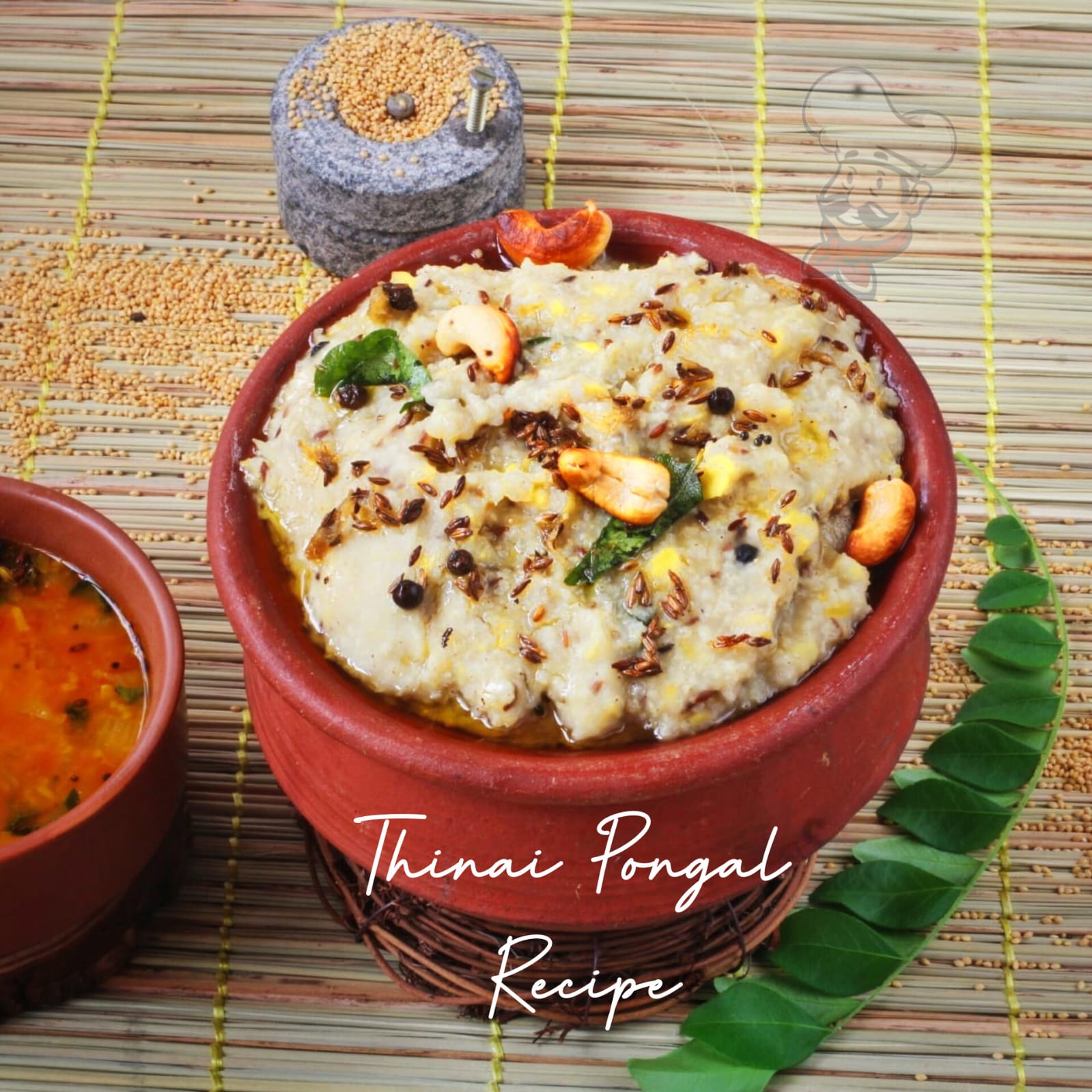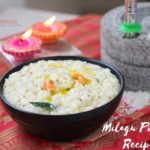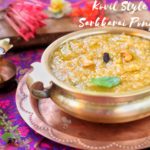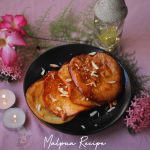Give yourself a nutritional boost with this power packed authentic Thinai pongal, that comes with the richness of the soil and the fragrance of its primitive history. Inhale the earthy flavor of home made Thinai pongal straight from the great Indian kitchen that would allure your senses and nourish your soul in one go..
Index:
- The Origin And History Of Thinai Pongal
- The Global Reach Of Thinai Based Dishes
- Thinai Pongal: Its Contribution To Wellness
- Biological Factors Of Thinai
- Geographical Factors Of Thinai
- Usage Of Thinai In Ancient India
- Needed Ingredients To Make Thinai Pongal
- Step wise Directions To Make Traditional Thinai Pongal
- Some Useful Observation
- Faqs
- Thinai Pongal In A Nutshell
- Suitable Accompaniments For Thinai Pongal
- Suitable Beverages To Serve Along With Thinai Pongal
- Ambience Ideas
- Nutritional Value
- Takeaway
"Thinai Pongal, a delightful amalgamation of flavors and nutrition, celebrates the greatness of foxtail millet. With its wholesome texture, aromatic spices, and a burst of traditional South Indian taste, Thinai Pongal embraces the essence of health and indulgence in a single dish. It embodies the wisdom of our ancestors, reminding us that true greatness lies in the simplicity and nourishment of nature's gifts."
The Origin And History Of Thinai Pongal:
The origin and history of Thinai Pongal can be traced back to the southern region of India, particularly Tamil Nadu, where Pongal is a popular and traditional dish. Pongal is a harvest festival celebrated in Tamil Nadu to express gratitude for a bountiful harvest.
Thinai Pongal is a variation of the traditional Pongal dish that is made using foxtail millet, also known as Thinai in Tamil. Foxtail millet has been cultivated in India for thousands of years and has a rich history in Indian cuisine.
Millets, including foxtail millet, have been staple grains in India for centuries. They were widely consumed by ancient civilizations like the Harappan civilization, where evidence of their cultivation has been found. Millets are known for their hardy nature, drought resistance, and high nutritional value, making them well-suited for cultivation in various regions of India.
As people realized the health benefits of millets and sought to incorporate them into their diets, different regional variations of Pongal began to emerge. Thinai Pongal gained popularity as a healthier alternative to the traditional rice-based Pongal.
Thinai Pongal is not only delicious but also offers several nutritional benefits. Foxtail millet is rich in fiber, protein, and essential minerals like iron, magnesium, and phosphorus. It is also gluten-free, making it suitable for those with gluten sensitivities or celiac disease.
Today, Thinai Pongal is prepared during the Pongal festival and is also served as a nutritious breakfast or lunch dish throughout the year. It is cherished for its unique flavor, texture, and its contribution to a healthier lifestyle.
The evolution of Thinai Pongal reflects the cultural significance of millets and their adaptation into traditional Indian recipes. As the world recognizes the importance of sustainable and nutritious food choices, the popularity of Thinai Pongal continues to grow, spreading its greatness beyond its place of origin.
The Global Reach Of Thinai Based Dishes:
While Thinai Pongal originated in Tamil Nadu, its popularity and prevalence have extended beyond its place of origin. Here's a glimpse into the worldwide recognition and adoption of Thinai Pongal:
Increased Awareness of Millets: In recent years, there has been a global surge in interest and awareness surrounding ancient grains and millets due to their nutritional benefits and sustainability. This has led to an increased appreciation for dishes like Thinai Pongal among health-conscious individuals worldwide.
Health and Wellness Trend: As people become more health-conscious and seek alternatives to refined grains, Thinai Pongal has gained popularity as a nutritious and wholesome dish. Its high fiber content, gluten-free nature, and rich nutrient profile have made it a preferred choice for those looking for healthier meal options.
Indian Cuisine and Cultural Exchange: Indian cuisine has gained significant popularity globally, with Indian restaurants and food establishments found in numerous countries. As a result, traditional Indian dishes like Thinai Pongal have made their way onto international menus, appealing to both Indian and non-Indian consumers who seek authentic and diverse culinary experiences.
Millet Advocacy and Initiatives: Various organizations and initiatives focused on promoting millet consumption have contributed to the recognition and prevalence of Thinai Pongal worldwide. These efforts include workshops, food festivals, and campaigns highlighting the nutritional benefits and versatility of millets, including Thinai Pongal.
Availability of Ingredients: With the increasing demand for millet-based products, including foxtail millet, the availability of these ingredients has improved in many countries. This accessibility has allowed individuals to recreate dishes like Thinai Pongal in their own kitchens, further contributing to its global prevalence.
While Thinai Pongal may not be as widely known or consumed as some other popular Indian dishes, its prominence is steadily growing due to the rising interest in millets and healthier food choices. As people continue to embrace the nutritional and culinary diversity offered by Thinai Pongal, its popularity is expected to expand further across the globe.
Thinai Pongal: Its Contribution To Wellness
Thinai Pongal offers several health benefits due to its key ingredient, foxtail millet, and the overall preparation method. Here are some of the health benefits associated with Thinai Pongal:
High in Nutrients: Foxtail millet is a nutrient-dense grain. It is rich in dietary fiber, protein, vitamins (such as B-complex vitamins), and essential minerals like iron, magnesium, and phosphorus. Consuming Thinai Pongal helps provide these vital nutrients to support overall health and well-being.
Good for Digestion: The fiber content in Thinai Pongal aids in digestion. It promotes healthy bowel movements, prevents constipation, and maintains a healthy digestive system. Including high-fiber foods like Thinai Pongal in your diet can contribute to improved digestion and gut health.
Weight Management: Thinai Pongal is a healthier alternative to traditional Pongal made with rice. Foxtail millet has a lower glycemic index, which means it releases glucose into the bloodstream at a slower rate. This slower release helps maintain stable blood sugar levels and may contribute to better weight management and diabetes control.
Gluten-Free Option: Foxtail millet, the main ingredient in Thinai Pongal, is naturally gluten-free. This makes Thinai Pongal a suitable choice for individuals with gluten sensitivities or those following a gluten-free diet.
Heart-Healthy: Thinai Pongal is low in saturated fat and cholesterol. It contains healthy fats like monounsaturated and polyunsaturated fats, which are beneficial for heart health. Additionally, the presence of magnesium and potassium in foxtail millet contributes to maintaining healthy blood pressure levels.
Provides Energy: The combination of foxtail millet and moong dal in Thinai Pongal provides a good source of complex carbohydrates and protein. These nutrients provide sustained energy, making Thinai Pongal an excellent breakfast or lunch option to keep you energized throughout the day.
Antioxidant Properties: Foxtail millet contains antioxidants like phenolic compounds, which help fight against oxidative stress and protect the body's cells from damage caused by free radicals. Including Thinai Pongal in your diet may contribute to overall antioxidant support.
It's important to note that while Thinai Pongal offers numerous health benefits, individual dietary requirements and health conditions may vary. It's always advisable to consult with a healthcare professional or nutritionist for personalized advice regarding your specific dietary needs.
Biological Factors Of Thinai:
When it comes to the biological factors of Thinai (foxtail millet), there are several key aspects to consider:
Nutrient Composition: Thinai is a nutritious grain that contains various essential nutrients. It is a good source of dietary fiber, protein, vitamins (such as B-complex vitamins like niacin and folate), and minerals (including iron, magnesium, and phosphorus). These nutrients play crucial roles in supporting bodily functions and overall health.
Glycemic Index: The glycemic index (GI) is a measure of how quickly carbohydrates in a food item are converted into glucose and enter the bloodstream. Foxtail millet, including Thinai, has a lower glycemic index compared to refined grains like white rice. This means that consuming Thinai can help regulate blood sugar levels more effectively and prevent sudden spikes or drops in blood glucose levels.
Gluten-Free Nature: Thinai is naturally gluten-free, which makes it suitable for individuals with gluten sensitivities, gluten intolerance, or celiac disease. It provides a safe and nutritious alternative for those who need to avoid gluten in their diet.
Antioxidant Properties: Foxtail millet, including Thinai, contains various antioxidants, such as phenolic compounds. These antioxidants help neutralize harmful free radicals in the body, reducing oxidative stress and protecting cells from damage. The antioxidant properties of Thinai contribute to its potential health benefits and support overall well-being.
Fiber Content: Thinai is rich in dietary fiber, both soluble and insoluble. Fiber is essential for maintaining a healthy digestive system, promoting regular bowel movements, and preventing constipation. Adequate fiber intake also helps regulate cholesterol levels, supports weight management, and provides a feeling of fullness.
Geographical Factors Of Thinai:
Foxtail millet, commonly known as Thinai, thrives in diverse geographical regions, making it a versatile and resilient crop. It is primarily grown in the warm and arid regions of India, particularly in states like Tamil Nadu, Karnataka, Andhra Pradesh, and Rajasthan. Thinai is well-suited to dry and semi-arid climates, where it can withstand high temperatures and limited water availability.
Its deep root system enables it to adapt to various soil types, including sandy and loamy soils. The crop's tolerance to drought and its short growing season make it an ideal choice for regions with erratic rainfall patterns. Thinai's adaptability and resilience contribute to its widespread cultivation, allowing it to be a staple grain in areas where other crops may face challenges. Its ability to thrive in different geographical conditions has played a crucial role in the sustenance of communities and the preservation of cultural culinary traditions.
Usage Of Thinai In Ancient India:
Thinai (foxtail millet) has a long history of usage in ancient Indian cuisine, dating back thousands of years. It was one of the staple grains extensively utilized in various culinary preparations. In ancient times, before the introduction of rice as a dominant grain, millets like Thinai held significant importance in the Indian diet.
Thinai was valued for its nutritional profile, adaptability, and easy cultivation. It was a vital source of sustenance for communities across different regions of India. Ancient Indian texts and scriptures mention the consumption of millets like Thinai as part of a balanced and wholesome diet.
In traditional Indian cuisine, Thinai was commonly used to make a variety of dishes. It was ground into flour to make roti (flatbread), dosa (pancakes), and idli (steamed cakes). Thinai was also used in the preparation of porridge, savory gruel, and sweet dishes.
The versatility of Thinai allowed it to be incorporated into a wide range of recipes, showcasing its adaptability and the creativity of ancient Indian cooks. Its mild, nutty flavor complemented various spices and ingredients, making it a versatile grain for both savory and sweet preparations.
Moreover, Thinai was highly regarded for its health benefits in ancient Indian medicine systems like Ayurveda. It was believed to be nourishing, easily digestible, and suitable for different body types. Thinai was considered a cooling grain, balancing the body's heat and promoting overall well-being.
The usage of Thinai in ancient Indian cuisine highlights the deep-rooted connection between food, culture, and health. Its widespread cultivation and integration into traditional recipes demonstrate its significance as a nourishing and sustainable grain that played a crucial role in the culinary heritage of ancient India.

Needed Ingredients To Make Thinai Pongal:
Foxtail Millet (Thinai): The star ingredient of Thinai Pongal, this nutritious grain is rich in fiber, protein, vitamins, and minerals, offering a wholesome and healthy base for the dish.
Split Yellow Moong Dal: Adding a creamy texture and protein boost, moong dal complements the millet, providing essential amino acids and additional nutrients to the dish.
Ghee (Clarified Butter): A dollop of ghee enhances the flavor and aroma of Thinai Pongal while providing healthy fats and a touch of richness to the dish.
Cashews: These crunchy nuts add a delightful nuttiness and texture to Thinai Pongal, along with a dose of healthy fats and minerals like potassium and magnesium.
Black Peppercorns: Crushed black peppercorns bring a gentle heat and distinctive flavor to the dish, providing a touch of spiciness and potential health benefits like aiding digestion.
Asafoetida (Hing): Asafoetida, a pungent spice, lends a unique and savory flavor to Thinai Pongal while aiding digestion and adding potential medicinal properties.
Curry Leaves: These aromatic leaves bring a burst of flavor and fragrance to the dish, along with potential antioxidant and anti-inflammatory properties.
Salt: A pinch of salt enhances the overall taste of Thinai Pongal, balancing flavors and bringing out the natural flavors of the ingredients.
Cumin Seeds: Cumin seeds contribute their earthy and warm flavor to Thinai Pongal, while also providing potential health benefits like aiding digestion and promoting nutrient absorption.Grated Ginger: Ginger adds a refreshing and zesty kick to the dish, along with potential digestive benefits and anti-inflammatory properties.
Grated Ginger: Ginger adds a refreshing and zesty kick to the dish, along with potential digestive benefits and anti-inflammatory properties.
Step wise Directions To Make Traditional Thinai Pongal:
Dry roast the foxtail millet in a pan over medium heat for a couple of minutes until it becomes fragrant. Remove it from the pan and set aside.
In the same pan, dry roast the moong dal until it turns golden brown and releases a nutty aroma. Remove and set aside.
Rinse the roasted thinai millet and dal under running water until the water runs clear. Drain and keep aside.
In a pressure cooker, add the rinsed millet, dal, and water. Close the lid and pressure cook on medium heat for about 3-4 whistles, or until the millet and dal are cooked and soft.
Allow the pressure to release naturally before opening the cooker.
Heat ghee in a separate pan. Add cashews and fry them until golden brown. Remove and keep aside.
In the same pan, add crushed black peppercorns, cumin seeds, grated ginger, asafoetida, green chili and curry leaves. Sauté for a minute until fragrant.
Add the cooked millet and dal mixture to the pan and mix well with the spices.
Add salt to taste and stir everything together, mashing the millet and dal slightly with the back of a ladle.
Cook for another 2-3 minutes on low heat, allowing the flavors to meld together.
Remove from heat and garnish the Thinai Pongal with the fried cashews and curry leaves.
Serve hot with coconut chutney or sambar.
Some Useful Observation:
Roasting: Pay attention while dry roasting the foxtail millet and split yellow moong dal. Roast them until they become fragrant and slightly golden, which enhances their flavors. Be careful not to burn them, as it can affect the taste of the dish.
Water Ratio: The water ratio is crucial for cooking the millet and dal to the right consistency. Follow the recommended ratio mentioned in the recipe. Adjust the water quantity slightly based on your preference for a thicker or thinner consistency of the Pongal.
Pressure Cooking Time: The cooking time may vary depending on the type and quality of the pressure cooker. Ensure that you cook the millet and dal until they are soft and well-cooked. Adjust the number of whistles or cooking time accordingly.
Seasoning: While sautéing the spices in ghee, make sure not to burn them. The spices should release their flavors and aromas without turning overly brown. Keep the heat at a medium level and stir frequently to prevent burning.
Mashing: When mashing the millet and dal mixture with the back of a ladle, do it gently to achieve the desired creamy texture.
Salt Adjustment: Add salt to the Thinai Pongal after combining the cooked mixture with spices. Start with a little amount and gradually adjust it according to your taste preferences. Remember to taste as you go and add more if needed.- Resting Time: Thinai Pongal tends to thicken as it cools down. If you prefer a looser consistency, serve it immediately after cooking. If you prefer a thicker consistency, allow it to rest for a few minutes before serving.
By making these observations and adjustments, you can ensure a successful and flavorful preparation of Thinai Pongal. Enjoy the process and savor the delicious outcome!
Faqs:
1. How is Thinai Pongal different from regular Pongal?
Ans: Thinai Pongal differs from regular Pongal in terms of the main ingredient used. While regular Pongal is made with rice, Thinai Pongal replaces rice with foxtail millet (Thinai). This substitution adds a nutty flavor and boosts the nutritional value of the dish.
2. Can Thinai Pongal be consumed by those with gluten sensitivities or celiac disease?
Ans: Yes, Thinai Pongal is an excellent choice for individuals with gluten sensitivities or celiac disease. Foxtail millet used in Thinai Pongal is naturally gluten-free, making it a safe and nutritious alternative to gluten-containing grains like wheat, barley, or rye.
3. Can Thinai Pongal be made vegan?
Ans: Yes, Thinai Pongal can be made vegan by replacing ghee (clarified butter) with a plant-based oil or vegan butter substitute. The rest of the ingredients remain the same, ensuring a flavorful and vegan-friendly dish.
4. Can Thinai Pongal be stored and reheated?
Ans: Yes, Thinai Pongal can be stored in an airtight container in the refrigerator for 2-3 days. When reheating, add a little water or vegetable broth to prevent it from drying out, and heat it on the stove or in the microwave until warmed through.
Thinai Pongal In A Nutshell:
Nature: Thinai Pongal is a warm and comforting dish made with foxtail millet, moong dal, and aromatic spices. It is a traditional South Indian dish enjoyed during festivals and as a wholesome meal.
Color: Thinai Pongal has a golden hue with specks of yellow from the cooked moong dal and the slight nutty brown color of the roasted foxtail millet. The dish may also feature the green color of curry leaves and the light brown shade of fried cashews.
Texture: The texture of Thinai Pongal is creamy and slightly grainy. The cooked millet and dal blend together, creating a soft and smooth consistency. The dish may also have a slight bite from the crushed black peppercorns and the crunchiness of cashews.
Consistency: Thinai Pongal typically has a semi-solid or porridge-like consistency. It is not overly thick or runny but has a comforting and mushy texture. However, the consistency can be adjusted according to personal preference by adding more or less water during the cooking process.
Aroma: When cooking Thinai Pongal, the kitchen fills with a delightful aroma of roasted millet, cooked dal, and the fragrant spices. The smell is warm, earthy, and inviting, stimulating the appetite.
Flavor: Thinai Pongal has a delicious and savory flavor profile. The nutty taste of foxtail millet combines with the mild sweetness of cooked moong dal. The spices like black pepper, cumin, and ginger add a subtle heat and earthy undertones. Ghee contributes a rich and buttery flavor, while curry leaves provide a hint of freshness. The overall flavor is comforting, satisfying, and packed with aromatic notes.
It's important to note that the exact nature, color, texture, consistency, smell, and flavor of Thinai Pongal may vary slightly depending on personal preferences, variations in the recipe, and individual cooking techniques.
Suitable Accompaniments For Thinai Pongal:
Thinai Pongal is typically served with a variety of accompaniments that complement its flavors and add a touch of freshness. Here are some traditional accompaniments that pair well with Thinai Pongal:
Coconut Chutney: A classic South Indian condiment, coconut chutney adds a creamy and coconut flavor to the Pongal. It is made with fresh coconut, green chilies, ginger, and tempered with mustard seeds and curry leaves.
Sambar: Sambar, a flavorful lentil-based vegetable stew, is another popular accompaniment. It is made with toor dal (pigeon pea lentils), tamarind, and a medley of vegetables like drumsticks, carrots, and tomatoes, seasoned with aromatic spices. The tangy and spicy flavors of sambar complement the mild and comforting taste of Thinai Pongal.
Medu Vada: Medu vada, also known as urad dal vada, is a deep-fried savory snack made with ground urad dal batter. It has a crispy exterior and a soft, fluffy interior. The crunchy texture and savory taste of medu vada provide a delightful contrast when enjoyed with Thinai Pongal.
Coconut Thuvaiyal: Coconut thuvaiyal, also known as coconut chutney powder, is a dry condiment made with roasted coconut, lentils, and spices. It adds a nutty and spicy flavor to Thinai Pongal when sprinkled on top or mixed into the dish.
Puli Inji: Puli Inji is a tangy and spicy ginger and tamarind relish. It combines the flavors of ginger, tamarind, jaggery, and spices to create a sweet, sour, and spicy condiment. The bold and tangy taste of Puli Inji provides a tangy kick to the mild flavors of Thinai Pongal.
Papadum: Crispy and thin papadums, also known as papads, are a popular accompaniment to many South Indian dishes. These thin lentil-based wafers add a crunchy texture and a burst of flavor when enjoyed with Thinai Pongal.
Pickle: A side of tangy and spicy pickle, such as mango pickle or lime pickle, can add an extra punch of flavor to Thinai Pongal. The tanginess and spiciness of the pickle complement the mild and creamy taste of the dish. These accompaniments provide a variety of flavors, textures, and tastes that enhance the overall dining experience with Thinai Pongal. The choice of accompaniments can vary based on personal preferences and regional culinary traditions.
Suitable Beverages To Serve Along With Thinai Pongal:
When it comes to pairing beverages with Thinai Pongal, which is a savory dish made with foxtail millet, here are some great options to consider:
Cold Drinks:
Buttermilk: The tangy and refreshing taste of buttermilk complements the flavors of Thinai Pongal beautifully. It helps balance the richness of the dish and aids in digestion.
Mint Lemonade: A cool and citrusy mint lemonade provides a refreshing and zesty contrast to the flavors of Thinai Pongal. The combination of mint and lemon adds a burst of freshness to the meal.
Tender Coconut: The natural sweetness and hydrating properties of coconut water make it a light and refreshing choice to accompany the savory Thinai Pongal. It provides a subtle and cooling effect.
Fresh Fruit Juice: Opt for a freshly squeezed fruit juice such as orange, pineapple, or watermelon. These juices offer a sweet and fruity element that complements the savory flavors of the dish.
Spiced Buttermilk: Add a twist to regular buttermilk by incorporating spices like cumin, black salt, and a pinch of chili powder. Spiced buttermilk provides a tangy and flavorful accompaniment to the savory Thinai Pongal.
Hot Beverages:
1. Filter Coffee: A typical South Indian aromatic filter coffee is a versatile beverage that matches wellwith this thinai pongal. A fluffy hot filter coffee served in a traditional tumbler dabara set would certainly satisfy your heart and soul in an instant.
2. Masala Tea: If you prefer a warm and tickling beverage, a cup of masala tea can be a delightful pairing with Thinai Pongal. The aromatic blend of tea, spices, and milk adds a comforting and flavorful note to the meal.
3. Herbal Tea: Choose an herbal tea like ginger, cardamom, or fennel for a soothing and aromatic beverage option. These teas have digestive properties and can complement the flavors of the dish.
Ambience Ideas:
To serve a traditional Thinai Pongal, it is important to create an ambiance that reflects the cultural and culinary significance of the dish. Start by choosing appropriate vessels and setting the table in a traditional manner. Serve the Thinai Pongal in a traditional South Indian stainless steel or brass pot, known as a "uruli" or "handi," which adds an authentic touch to the presentation. Use banana leaves or traditional serving plates to serve the Pongal. Place small bowls or katoris filled with accompaniments like coconut chutney, sambar, and pickles alongside the Pongal.
To create a warm and inviting ambience, use traditional Indian tablecloths or mats with vibrant colors and patterns. Dim the lights and light aromatic incense or candles with soothing fragrances. Soft instrumental Indian music playing in the background can further enhance the dining experience. Encourage guests to eat the Thinai Pongal with their hands, as it is customary in South Indian cuisine, and provide water or finger bowls for cleansing. The combination of appropriate vessels, traditional table setting, and a pleasant ambience sets the stage for a memorable and authentic Thinai Pongal dining experience.
Takeaway:
Thinai Pongal holds a special place in Indian cuisine, showcasing the greatness and rich heritage of traditional culinary practices. Its contribution to wellness is truly remarkable. This wholesome dish, prepared with nutritious foxtail millet, provides a multitude of health benefits. From being gluten-free and easily digestible to promoting weight management and supporting heart health, Thinai Pongal is a true symbol of wellness. It embodies the wisdom of our ancestors who understood the importance of incorporating wholesome grains and spices into our diets.
The flavors and textures of Thinai Pongal tantalize the taste buds, while its nutritional profile nourishes the body. As we savor every spoonful of this delectable dish, let us appreciate the wisdom and goodness it brings to our lives, celebrating the timeless contributions of Indian cuisine to our overall well-being.
Ingredients
Directions
Dry roast the foxtail millet in a pan over medium heat for a couple of minutes until it becomes fragrant. Remove it from the pan and set aside.
In the same pan, dry roast the moong dal until it turns golden brown and releases a nutty aroma. Remove and set aside.
Rinse the roasted thinai millet and dal under running water until the water runs clear. Drain and keep aside.
In a pressure cooker, add the rinsed millet, dal, and water. Close the lid and pressure cook on medium heat for about 3-4 whistles, or until the millet and dal are cooked and soft.
Allow the pressure to release naturally before opening the cooker.
Heat ghee in a separate pan. Add cashews and fry them until golden brown. Remove and keep aside.
In the same pan, add crushed black peppercorns, cumin seeds, grated ginger, asafoetida, green chili and curry leaves. Sauté for a minute until fragrant.
Add the cooked millet and dal mixture to the pan and mix well with the spices.
Add salt to taste and stir everything together, mashing the millet and dal slightly with the back of a ladle.
Cook for another 2-3 minutes on low heat, allowing the flavors to meld together.
Remove from heat and garnish the Thinai Pongal with the fried cashews and curry leaves.
Serve hot with coconut chutney or sambar.








